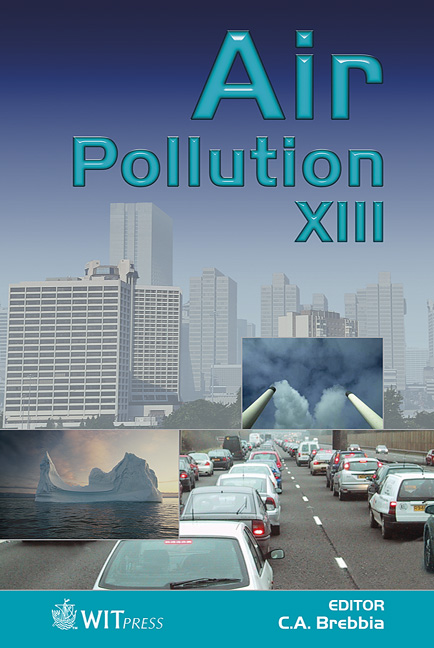Application Of A Global Airborne Pollutant Indicator To Quantify The Danger Of Air Pollution
Price
Free (open access)
Transaction
Volume
82
Pages
6
Published
2005
Size
339 kb
Paper DOI
10.2495/AIR050431
Copyright
WIT Press
Author(s)
S. Cariou, J.-M. Guillot, L. Pépin, P. Kaluzny & L.-P. Faure
Abstract
Many researches on air analysis have been carried out for many years. But air analysis reports are sometimes difficult to understand by non-scientific people. That’s why a global airborne pollutant indicator (GAPI) to quickly determine the level of pollution was built. Such an indicator used relative impact weights of the different molecules to quantify a pollution based on one or several criteria. These impact weights could take into account several characteristics of the pollutant molecules (toxicity, ability to produce ozone, molecular volume and its impact on microelectronic process…). A combination of factors could also be used in order to be as close as possible to the reality. So, it could be used in different ways: controlling air toxicity, determining the level of pollution in the controlled environment, for example in microelectronics that require less and less contaminants in cleanrooms. GAPI can be adapted to a large range of situations and give a more precise quantification of pollution depending on the selected criteria to be followed. Examples of utilisation of this indicator are shown in this study. An analysis of an industrial pollution is used as an example for report. Then GAPI is calculated with an MIR indicator as impact factor to calculate the ability of global exhaust to produce ozone. Comparison between GAPI and the classical sum of concentration can give an overview of the impact of pollution in the production of ozone. Then, an example of GAPI utilisation in indoor air is given for an irritant atmosphere. Keywords: air quality, VOC, measurement, pollutant impact.
Keywords
air quality, VOC, measurement, pollutant impact.





